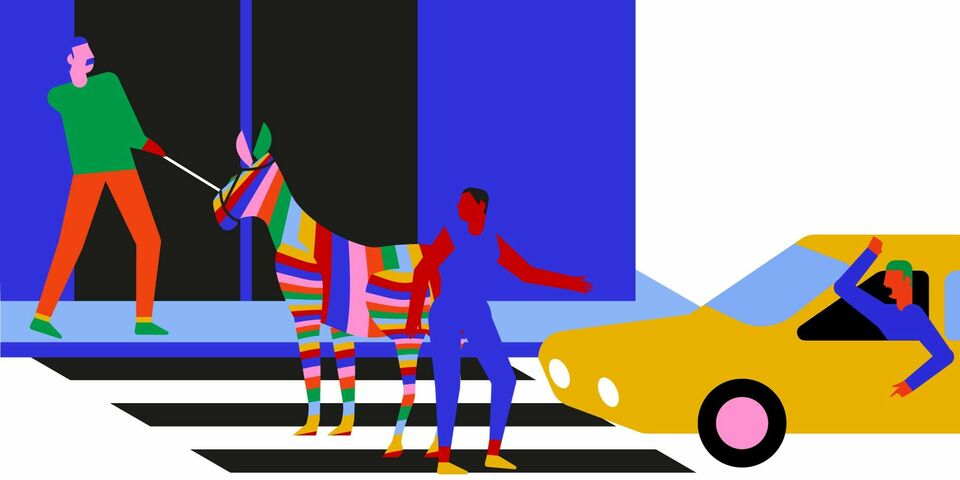Diversity officers regularly face violent reactions or harassment
Discussions on diversity and inclusion in higher education have become increasingly political in recent years and lead to heated reactions more often. This is the outcome of a large-scale survey carried out by 21 higher education media on the diversity and inclusion policies of 13 universities and eight universities of applied sciences in the Netherlands. Several diversity employees who participated in the survey say they have been threatened.
Whereas a few years ago, the discussions were mainly focused on performance-based topics such as more women at the top and recruiting more international students, now, they are centred around anti-racism, gender identity and adapting (‘decolonising’) education, the survey shows.
The survey, entitled ‘Diversity in times of polarisation’, was carried out by the independent journalistic media of higher education institutions that are organised in the Council of Editors-in-Chief of Higher Education Media, and resulted in a number of articles that will be published by the involved media starting today.
Online hate
Diversity employees are regularly faced with online hate reactions, threats and harassment. Progressive students and staff feel that their efforts are not enough, whereas the conservative side believes that all efforts surrounding diversity and inclusion are excessive.
Several of the diversity employees who were interviewed said they had been personally threatened. As far as is known, no one has filed a police report. A diversity employee who wishes to remain anonymous commented the following: ‘Our names are public, and as a result, our families fall victim to online hate as well. And sometimes, the reactions are even shared by MPs who disagree with our work.’
The reactions are intimidating, partly because diversity employees often belong to minority groups themselves, the employee explains. President of the National Dialogue Network of Diversity Officers Aya Ezawa (Leiden University) commented on this in one of the articles: ‘You need a thick skin, solid substantive arguments and diplomatic skills to get the community on board.’
Main points of contention
According to the survey, the main points of contention are making teaching materials inclusive, using a wider range of pronouns besides he/him and she/her, and changing male or female toilets to all-gender toilets.
Furthermore, the results of the survey show that all surveyed institutions regularly organise events surrounding diversity and inclusion. All institutions have guidelines for writing inclusive vacancy texts and offer (sometimes compulsory) training to recognise unconscious bias in yourself. In addition, all higher education institutions surveyed have at least one gender-neutral toilet, although these toilets are not always easy to find. Nine out of twenty institutions have a permanent LGBTI+ symbol displayed somewhere around their educational venue to show their solidarity with this community; often in the form of a rainbow zebra crossing or flag.
Regional differences
There are regional differences in how much attention is paid to discussions and policies on diversity, the survey reveals. The topic seems to be of more concern to students in the Randstad region than in the rest of the country; although the number of international students and staff may also play a role in this. In Maastricht, for example, there is a very activist tone. At the technically-oriented universities, such as Eindhoven and Twente, a more moderate atmosphere prevails, even among the large international community.
According to Alet Denneboom, HR adviser Participation, Diversity and Inclusion at Hanze University of Applied Sciences Groningen, this does not mean that diversity and inclusion is a problem reserved for the Randstad. ‘It’s precisely when the student population is more homogeneous that staff or students who don’t quite fit into the traditional picture feel out of place.’
Accountability for the survey
The participating media from the universities and universities of applied sciences are members of the Council of Editors-in-Chief of Higher Education Media.
For the purpose of this survey, 36 policy documents from 21 educational institutions (13 universities and 8 universities of applied sciences) were analysed. These include visions, strategies, memoranda, action plans and position papers detailing the plans of the educational institutions in question.
For the purpose of this survey, we spoke to diversity officers from thirteen universities and seven universities of applied sciences to discuss their work.
These are the institutions surveyed:
Fontys Universities of Applied Sciences, University of Groningen, Vrije Universiteit Amsterdam, Utrecht University, University of Twente, Avans Universities of Applied Sciences, Eindhoven University of Technology, Erasmus University Rotterdam, Rotterdam University of Applied Sciences, Radboud University Nijmegen, Utrecht University of Applied Sciences, Delft University of Technology, Arnhem Nijmegen University of Applied Sciences, Maastricht University, Amsterdam University of Applied Sciences, Hanse University of Applied Sciences Groningen, Tilburg University, Saxion University of Applied Sciences, University of Amsterdam, Wageningen University, Leiden University.
This research was made possible by a contribution from the Journalism Promotion Fund.


Discussion